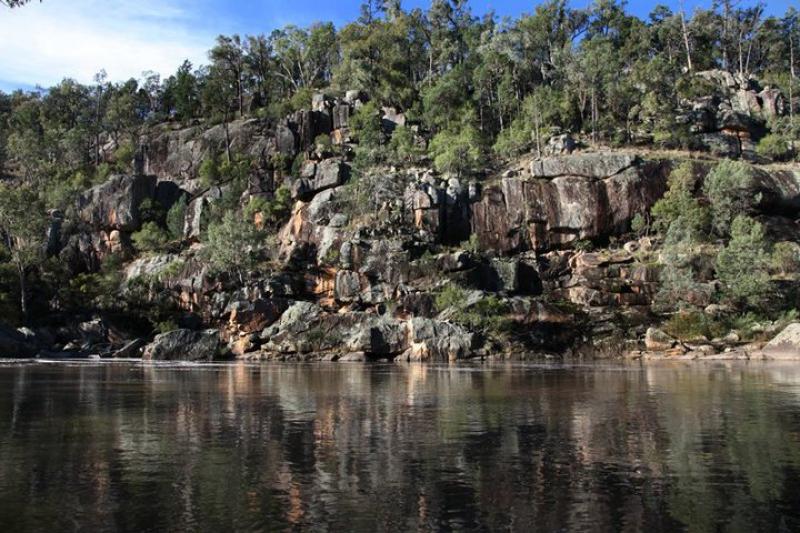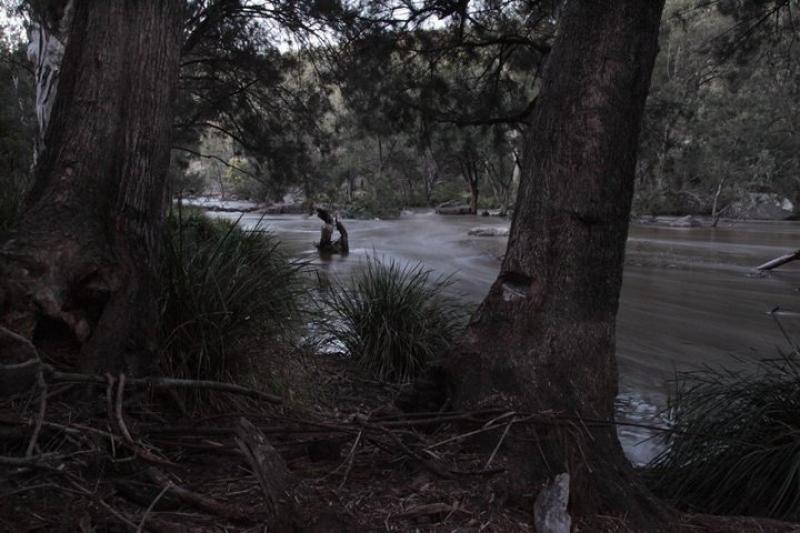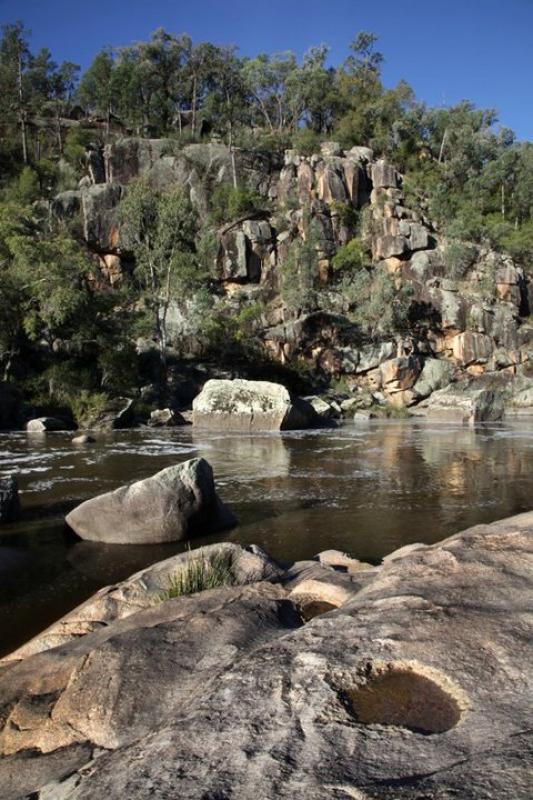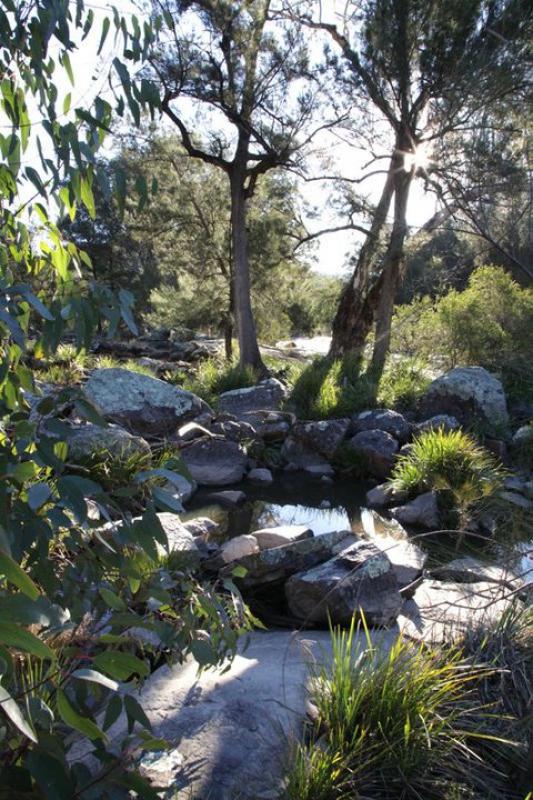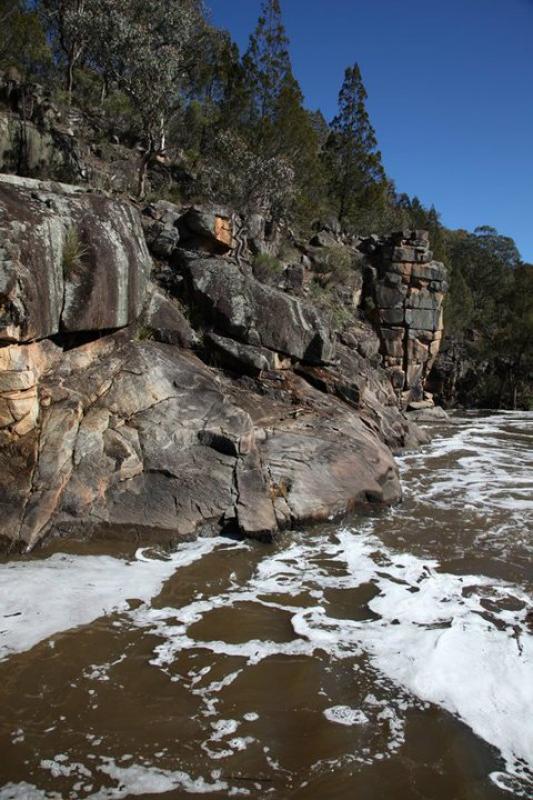Warrabah National Park
![]()
![]()
![]()
![]()
![]()
Camping Areas at Warrabah National Park (2 campsites)
Warrabah Camping Area - Well maintained campground on the beautiful Namoi River in Warrabah National Park, with a choice of open group camping spots or more secluded sites with picnic tables and fire places. more...
Gum Hole Camping Area - Adjacent to the Namoi River, this is a well maintained, 4wd access only, campground in Warrabah National Park. more...
About Warrabah National Park
Being one of the few inland parks in NSW that has access to a large river makes Warrabah a great spot for warm weather. The picnic area and most of the camping areas are within a stones throw of the water, which has some great swimming holes.
Large granite boulders and deep canyons make up most of the river and agile adventurers can rock hop, swim, and scramble to a secluded swimming spot from the main picnic area or campsites.
The river has cut it's way west through the granite belt (running from Bendemeer to the Tenterfield). The result is deep pools where you can fish, trickling rapids and high walled canyons.
There is a great picnic area when you first enter the park with barbeques and picnic tables, however be prepared during holidays and weekends to share the space as Warrabah is a popular spot for local day trips.
Walking
There are no defined walking tracks within the park, however (well prepared) exploring from the main areas rewards the hiker with views of the river and a bit of exercise. The granite and often open woodland means you won't necessarily get scratched to pieces trying to get to the top of a hill to see the view.
Canoeing
After a decent amount of rain, the river provides some great whitewater kayaking. with up to grade three rapids.
Fishing
Some of the deeper holes provide a great opportunity for fishing. Yes, fishing in Warrabah National Park is allowed (with a permit available from NSW fisheries)
Flora
Warrabah's vegetation is mainly woodland, with white cypress pine, hill red gum and Caley's ironbark. The scrub layer is dominated by teatree, while the river banks support tall stands of river oak, teatree and bottlebrush. Sheltered southern slopes contain small pockets of red stringybark, rough-barked apple and Quinn's mallee.
Fauna
Grey kangaroos, swamp wallabies, wallaroos, brushtail possums, ringtail possums and marsupial mice are common in the park. Over 120 bird species have been seen, including the colourful rainbow lorikeet and the powerful wedge-tailed eagle. The park's rocky terrain is an ideal habitat for reptiles, including the copper-tailed skink, southern spotted velvet gecko and the shy red-bellied black snake.
Must see/do (places of interest)
If you happen to be near this park after some heavy rain the sight and sound of the river cascading over the large granite boulders on its way west is well worth a short drive.
Access
The main access to the park is from Manilla (approximately 37km). About 500m west of the bridge, the road leads off the highway to the north. There area couple of turns that are well signed.
comments powered by Disqus
Home | Articles | FAQs | Terms | Privacy
© Net Reach Media Pty Ltd 2017
Visit our other sites
CairnsToCape.com.au
What to do, see, where to stay and the wildlife of this spectacular section of Far North Queensland
BushandBoat.com.au
Adventure tours in Port Douglas, Cape Tribulation and the Daintree Rainforest

